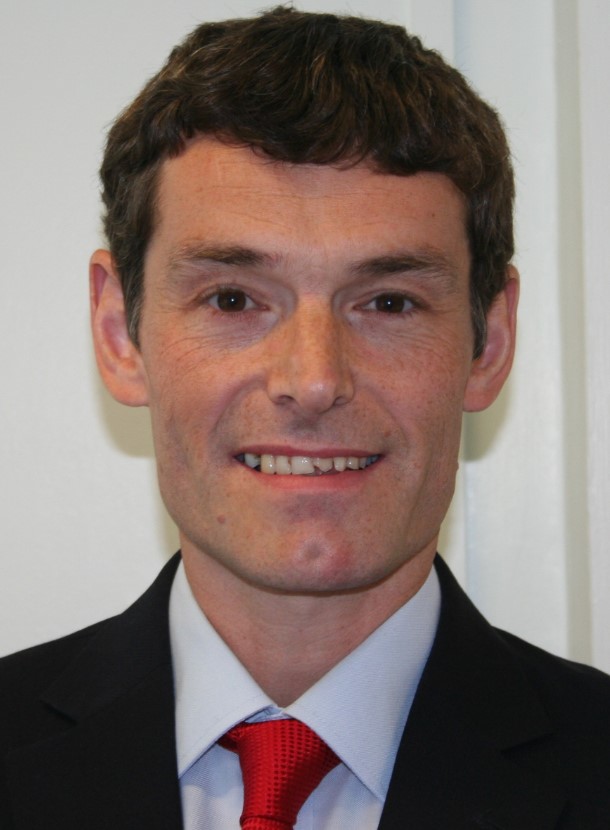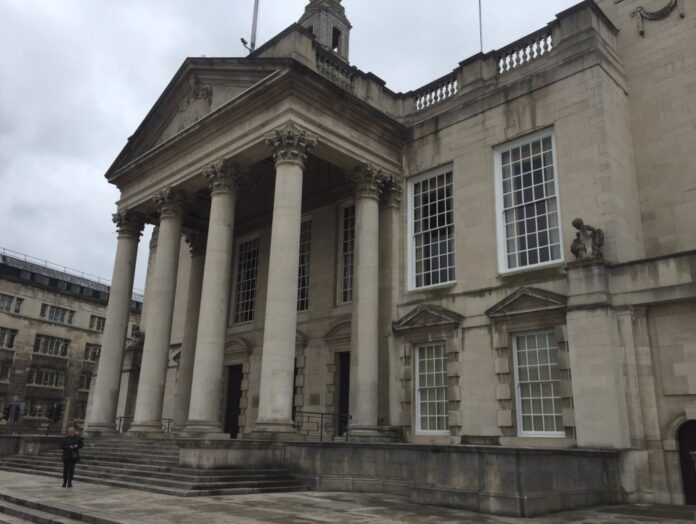Leeds City Council may have to reconsider whether it still needs to build on green belt sites in the district, according to a report by the authority’s own officers, writes Richard Beecham.
A document went before the councillors today claiming the “healthy” number of sites currently under construction, as well as uncertainty around Covid-19’s effects on housebuilding, mean the council will have to determine “whether there is a need” to include the 37 green belt sites it had originally included in its long term housing plans.
It follows a decision from the High Court last month, which ruled the inclusion of green belt sites on the council’s Site Allocations Plan (SAP) would have to be removed from the plans and sent back to the government for approval.
If all 37 sites were taken out of the council’s submission, this would potentially mean thousands fewer houses would be built on greenfield sites across the city in the coming years.
The SAP – a council document outlining sites where future housing and commercial developments should take place over the coming years – was adopted by Leeds City Council in July 2019. This is required by every local authority in the country, as it demonstrates whether each area is able to meet government targets for the building of the new houses likely to be needed in future.
However, a legal challenge to the SAP from the Aireborough Neighbourhood Development Forum claimed there was an “error of law” relating to all potential green belt housing sites across the city.
This resulted in the High Court ruling last month that all 37 sites in the SAP that were previously in the greenbelt would be considered as “not adopted” and sent back to the government and planning inspectorate for further examination.
Councils are required to have enough capacity to build houses over the next five years – this is known as a five-year land supply. Council officers claim Leeds still met the required land supply as, even without the 37 greenbelt sites, there are still enough sites in the SAP for another six years.
Their report claimed the current state of housebuilding in the city was “healthy”, adding:
“Building control returns reveal that there are over 100 outlets operating district-wide with more than 5,000 individual plots actively being built across all markets and locations.
“There is a total stock of almost 29,000 new homes with planning permission reflective of the greatest level of outstanding capacity in over a decade. In addition, the Government’s recent announcements including increased permitted development rights for new housing may further boost the picture of supply.
“At this stage it is too early to tell what the impacts of the pandemic will be on the supply and delivery of housing. Whilst construction inevitably slowed during the lockdown months there are signs that this is now quickly recovering and Government has put in place measures to stimulate the house building sector.
“All these factors will need consideration in order to determine whether there is a need for any or all of the Green Belt allocations listed in the schedule.”
The report claimed Leeds City Council would now “update its evidence base”, and decide if any changes need to be made to the plan, including whether any or all of the 37 sites should be taken out of the final submission to government.
It added: “The effect of the judgement is to revoke the adoption of 4,070 new homes across 37 sites.
“In some instances, it may, however, be the case that individual developments in specific contexts are able to demonstrate very special circumstances for development in the Green Belt, and therefore acquire planning consent in spite of no longer being allocated and being returned to the Green Belt.”
The council expects to conclude this process within six-to-eight weeks. New proposals would then be sent to government for approval.
Which West Leeds sites are on the list?
All addresses are followed by the proposed housing capacity for that site.
Whitehall Road, Harpers Farm, Farnley – 279
Calverley Cutting, Apperley Bridge – 32
Woodhall Road, Gain Lane, Thornbury – 196
Daleside Road, Thornbury North – 89
Waterloo Road, Pudsey – 28
Dick Lane, Thornbury – 206
Tyersal Road, Pudsey – 33
Land off Tyersal Court, Tyersal – 46
“10-year planning shambles”
A Calverley & Farsley councillor has branded the ongoing uncertainty around the authority’s housebuilding targets a “10-year planning shambles”.

The comments were made by the leader of the authority’s opposition Conservatives group Coun Andrew Carter, who claimed 37 green belt sites were “needlessly put at risk” of housing development by the council.
It follows a high court ruling last month, in which a judge found that an “error of law” was made in including sites formerly in the green belt in the council’s long term Site Allocations Plan (SAP) for housing, and that the sites should be immediately taken out and re-examined by the government.
But the council’s executive member for housing Coun Lisa Mulherin hit back at Coun Carter, claiming the errors of law were made by government planning inspectors in the first place, and that the changes could make it difficult for people to buy houses in communities outside the inner-city.
The SAP lists sites on which the council feels are appropriate for to build new houses over the coming years, in order to meet housing targets given to the authority by the government.
Leeds’s SAP was adopted by the council in July 2019, following a public inquiry and report by government planning inspectors. However, this was subject to a legal challenge by Aireborough residents before, in June 2020, a judge found that three of the seven grounds used in the SAP constituted errors of law.
This led to a recent order that all 37 sites in the SAP that had been in the green belt should be handed back to the government for examination.
Coun Carter told a meeting of the council’s housing scrutiny committee:
“I can only describe this now as a 10-year planning shambles, culminating in this court case.
“To be frank, it is no good saying ‘the inspectors got it wrong’ – the inspectors came to their conclusions because of all the evidence presented by (Labour’s) administration. You can share the blame equally.
“The sad thing about this is that 37 green belt sites were needlessly put at risk. We still have a 6.1 year land supply. There is also a total number of new homes with planning permission outstanding of 29,000 – that is the highest capacity in over a decade.”
Coun Carter claimed that, in chasing such a high housing total in the first place, the council had hamstrung itself into having to find unsuitable sites to build on, leading to the recent judgement.
He added: “It leads me to believe that if you’d accepted a lesser total figure. There wouldn’t have been the need for the most sensitive of these green belt sites to be included, and that would have led, probably, to no legal challenge – this is a hugely self-inflicted wound.
“Throughout this process, the council has based its assumptions on very optimistic levels of economic growth. If it was ever likely to be that high in the first place, it certainly isn’t now post-Covid.
“I do hope that officers are going to properly look at economic data coming back to us.”
The meeting heard that even when the green belt sites were taken out of the plans, the council still had a surplus of sites for housing. But Coun Lisa Mulherin, the council’s executive member for housing, suggested this could lead to poorer, more urban areas taking on a disproportionate amount of new houses.
“The allegation that officers in this council hadn’t done their jobs properly in terms of presenting information needs to be refuted,” she said. “We are up against what was written in the inspector’s report in which the judge has found fault.
“(Under the current plans) The housing land supply is delivered, effectively, by the city centre and inner areas delivering way above their requirements, and outer areas delivering rather less of that.
“In terms of having availability of housing for all our communities, and wanting to be able to buy homes near the area they grew up in – that presents a challenge.
“We hopefully can move forward in terms of developing a proper local plan that has all the priorities in tackling the climate emergency.
“I am keen not to go back through a lengthy process and move forward to get some of the housing to meet the challenges of the future and tackles the climate emergency.”

Committee member Coun Kevin Ritchie (Lab, Bramley & Stanningley) added:
“The imbalance of the housing allocations across the city where we have a massive surplus in the city centre and the inner areas.
“Even anecdotally, we know there is a need for housing in those outer areas where young people want to stay in the places they grew up in. This imbalance of the allocations could have consequences for us, but it does worry me.”
The meeting heard that, while it is likely to take around six-to-eight weeks for the council to resubmit its green belt sites, it was unclear how long the government would take to review make a judgement on whether they were suitable.


I can’t take these housing negotiations seriously anymore. Recently planners earmarked areas of known flooding and then they flooded and the area was de-earmarked. Can we trust the decision making of Local Authority Housing Development?
Can we trust they will do what is best (especially when we know there are brown sites available and grants to help develop brown sites)? We can see how much money our Local Authority is prepared to spend on cycle tracks for a minority group and how important it is to spend money sending letters to Council employees telling them to eat good food and exercise etc but when it comes to preserving the green-belt there isn’t as much enthusiasm it seems.
We know new home owners want to open their curtains to fields every day but so did the people who bought houses 30 years ago who were told no further development would be permitted.